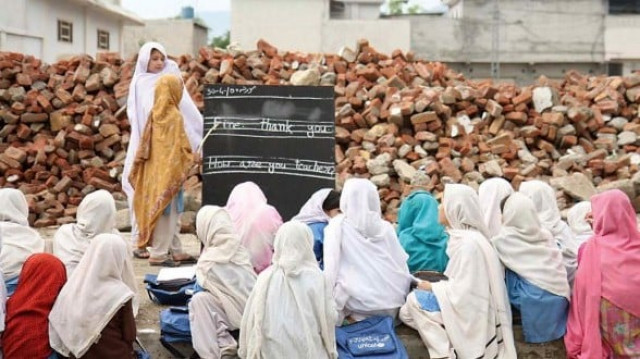Winning the war, losing the peace?

The occasional suicide blast is followed by the storming of heavily armed troops that race through empty streets in military pickups mounted with heavy firepower. One moment the streets are packed with people going about their business; the second, they’re replaced by men brandishing grenade launchers. But then there’s the Swat of dazzlingly illuminated shops thronged by eager customers.
There’s the Swat of girls and boys lugging their UNsponsored bags to schools that had been destroyed by the Taliban. And the once sealed cinema which is now running to capacity crowds is also Swat. There are school bags in hundreds and guns in the thousands. Life is acquiring a rhythm but under a dark cloud of suppressed fear.
The ravages of war are plain: broken roads, damaged buildings, fortified bunkers and scores of military check posts. As Swat makes the delicate transition from war to sustainable peace, the people are still waiting for the federal and provincial governments to make good on their promises. The state of schools makes this glaringly obvious. The Taliban had a particular hatred for girls’ education. One by one, school buildings across Swat were blown up and girls were banned from receiving any form of education.
Today, the girls of Swat are back in school. But for thousands of these girls, ‘school’ is a cluster of tents. Sitting on mats in the freezing cold and sweltering heat, these learn English, Urdu and mathematics. One teacher says enrollment figures for girls are much higher than before the war. Even so, a large number have not returned to school because many parents don’t want their daughters to study out in the open or in tents. These parents are now waiting for the school buildings to be reconstructed.
But fears are, they may be waiting a long time. According to official figures, a total of 401 schools were destroyed by the Taliban in Swat. Of these, 226 were partially damaged. While the army has repaired 202 schools, the civilian administration has none to its credit. As the girls squat in their ‘tent school’, next door, under frantic construction is a police station. I went looking for answers to the man responsible for all educational matters, the Education District Officer. He sits in a bare office in the heavily fortified governmental complex.
He throws a slew of statistics at me regarding budgets, tenders and approvals to explain why the last one year hasn’t seen a crop of new schools coming up. But the army managed. “Government procedures take time,” he shrugs. There doesn’t seem to be a real shortage of funds. The federal and provincial governments have pledged millions of rupees. Donor countries and agencies have also sent mega-dollars.
But this money is stuck in the bureaucratic pipeline. The figures may look good on paper but on the ground, most schools are still just mounds of rubble. We won the war but I fear we may be losing the peace.

















COMMENTS
Comments are moderated and generally will be posted if they are on-topic and not abusive.
For more information, please see our Comments FAQ